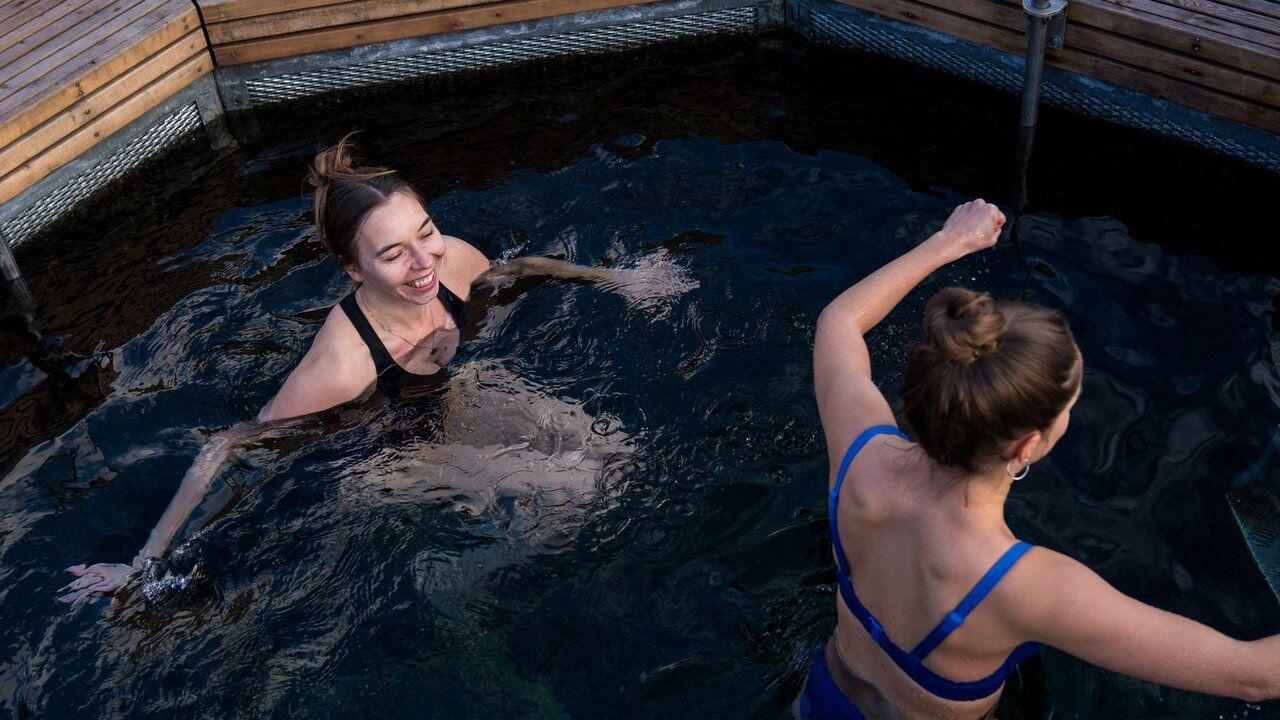Cold plunging has now entered the mainstream, with 500 million views of cold plunging videos on TikTok.
Local Polar Bear clubs, where hundreds, or even thousands, of swimmers dive into freezing waters, usually end up being a 30-second soundbite on local news channels or a one-shot newspaper headline. Questions about the health benefits of cold plunging are generally glossed over by questions about the participant’s mental state.
I have to admit I was one of those people. I couldn’t understand how anyone would voluntarily dive into freezing water, a practice I was always told would end in sickness or even death. But the social media explosion and skyrocketing sales of backyard cold plunge pools got my attention. And now science is lauding the positive effects.
The First Step Is the Coldest
Leaving a perfectly warm bed and jumping into the nearest freezing cold body of water was not an instinct I was born with. A friend had taken a few cold plunges and piqued my curiosity about the practice. I am adventurous, especially when it involves outdoor activities on the rugged west coast of British Columbia. There was no shortage of natural cold-plunging destinations in the area.
During my first cold plunge, I discovered the same things other first-time cold dippers experience. The water temperature is shockingly cold and prompts an immediate “fight or flight” reaction. The first breath is more of a gasp, followed by hyperventilation. A surge of adrenaline causes your heart rate to increase rapidly. A combination of high blood pressure and spiking glucose levels provides an energy boost to bolster the “flight” half of the equation.
Within a few minutes, however, the body adjusts to the water temperature, and the initial panic is replaced with a sense of euphoria, almost like a runner’s high. The body releases endorphins in response to the sudden shock, and mental awareness becomes heightened. Any cobwebs remaining in my head are swept away almost immediately with each plunge I take.
A Cold-Plunging Journey of 100 Days
While many cold plunging enthusiasts pick one day out of the year to ply their trade, I decided to take my new extreme hobby to another level. I embarked on a 100-day cold plunging journey, taking at least one plunge every single day. I have to admit that some days were much more challenging than others since I am a type 1 diabetic and face other health challenges. Taking the plunge can be painful at times, and maintaining my enthusiasm on those off days proved to be the biggest challenge of all.
I have since started another 100-day challenge and continue to cold plunge throughout the year. Cold dippers can still take the plunge during warmer months through the use of specially designed cold water plunging tubs or soaking tubs filled with ice. Ice water therapy is a common practice to relieve sore muscles after playing sports or working out.
Enjoy the Freezing Company of Othe
When I began my cold plunging journey, I did not realize the size and scope of a global cold dipping community. The Coney Island Polar Bear Club is believed to be the oldest winter swimming club in the United States, founded in 1903. There are thousands of other chapters of the Polar Bear Club scattered around the world, each holding their own annual cold plunges in local waters, commonly on New Year’s Day.
Another nonprofit cold plunging organization called Bluetits offers group events and companionship for its members. The organization began with a woman named Sian taking a mile-long ice swim and currently has over 120,000 members around the world.
A little closer to my British Columbian roots lies the Clayoquot Wilderness Lodge, which now offers temporarily cold-blooded guests like me an opportunity to take the plunge in glacial waters.
“In 2023, Clayoquot Wilderness Lodge launched its glacial plunge signature experience, which has received an outstandingly positive response from guests around the world,” shares Clayoquot’s general manager, Sarah Cruse. “Taking the ‘glacial plunge’ includes embarking on a mindful journey to an alpine lake or to the shores of the Bedwell River, engaging in a series of guided meditations and breathing exercises before plunging into our crystal clear, pure, and very cold waters.”
Cruse adds, “Our guests report the experience as transformational. Here in this magnificent part of the world at Clayoquot Sound, we are all about creating magic and memorable moments for our guests to connect with themselves and their loved ones in Canadian nature. The glacial plunge offers guests a real journey of wellbeing that provides a renewed sense of energy and an overall reset for the mind, body, and spirit.”
Copenhagen, Denmark: An Ice Bucket List Destination for Cold Dippers
Considering Copenhagen’s Nordic climate and lifestyle, it did not surprise me to discover the harbor area offers many opportunities for cold swims and arctic plunges.
Copenhagen offers two official “dipping zones,” pools designed specifically for cold water bathing, not swimming. The first dipping zone is located by the harbor bath in Nordhavn, and the second one is near Kalvebod Bølge in Vesterbro.
Cold water swimming is also possible in the harbor baths in Copenhagen, with locations at Halfdansgade by Islands Brygge, Kalvebod Bølge, Harbor Bath Fisketorvet, Sandkaj in Nordhavn, Søndre Refshalebassin in Refshaleøen, and La Banchina in Refshaleøen.
It is even possible to take a cold water swim in the ocean. At Kastrup Sea Bath, cold dippers enter the ocean from a long bridge or from the architectural showpiece known as ‘The Snail’. It is not defined as a cold dipping zone, but the combination of a cold ocean swim and recovery time in The Snail makes the trek worthwhile.
Travelbinger is now on YouTube! Subscribe here for exclusive travel tips and advice from founder Jimmy Im. Follow us on Twitter, Facebook and Instagram.

